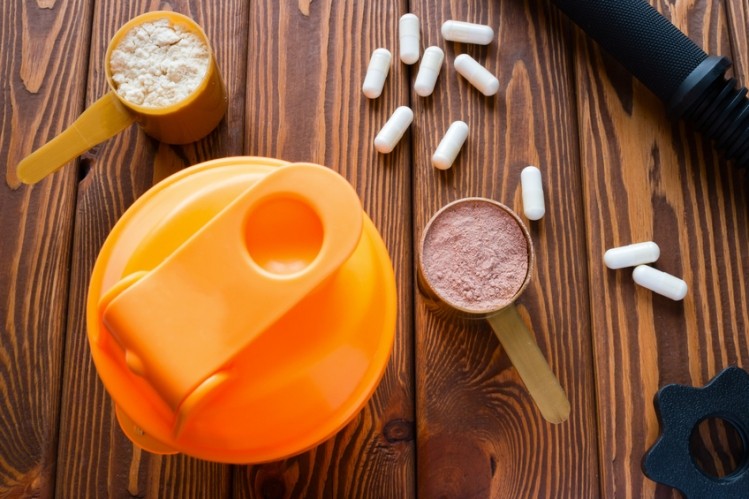Method detailed in study confirms synthetic stimulant in supplements

The stimulant ingredient, which is also known as 1,5-DMHA or Octodrine, has been found in some weight loss and sports nutrition supplements according to a paper published last year by a group of researchers led by prominent industry critic Dr. Pieter Cohen, MD.
This most recent paper, titled “1,5-Dimethylhexylamine (Octodrine) in Sports and Weight Loss Supplements: Natural Constituent or Synthetic Chemical?” was published in the Journal of Pharmaceutical and Biomedical Analysis. It was written by a group of researchers that included Dr. Ikhlas Khan, PhD, of the National Center for Natural Products Research at the University of Mississippi.
In that previous paper published last November, Octodrine (whose chemical formula is also given as 2-amino-6-methylheptane or 2-aminoisoheptane) was found in some of the six products studied, along with 1,4-dimethylamylamine (1,4-DMAA), 1,3-dimethylamylamine (1,3- DMAA) and 1,3-dimethylbutylamine (1,3-DMBA). The Cohen paper can be read directly here.
Family tree of dodgy ingredients
DMAA has been ruled by FDA to be an illegal dietary ingredient since 2013, when it was taken off the market because of safety concerns. But it still continues to show up at the fringes of the dietary supplement industry. The lone high-profile holdout was Hi Tech Pharmaceuticals, which had openly sold products containing the ingredient while a legal wrangle with FDA ran its course.
Hi Tech founder Jared Wheat reportedly agreed in early October of last year to stop selling products containing the ingredient as part of a bail deal associated his indictment on money laundering and mail fraud charges. Wheat was among the promoters of the ingredient who claimed to have evidence that DMAA is a constituent of geranium, something that FDA has disputed.
DMBA has been in FDA’s crosshairs almost as long as DMAA. Purported to be a constituent of dendrobium, an orchid species, DMBA is not a legal dietary ingredient because FDA has ruled that it is a New Dietary Ingredient for which no notification is on file.
In both cases, these ingredients were initially brought to market purporting to be botanical extracts, something which experts disputed. Nevertheless, that marketing strategy appears to be aimed at what promoters see as a weakness in the regulatory structure, namely that a pre-DSHEA positioning affords an easier path to market.
Octodrine is another case entirely. The substance was once briefly marketed as nasal spray to treat bronchitis symptoms in the US in the early 1940s, and was mentioned in the 1947 edition of the Physicians Desk Reference, a compilation of manufacturers’ prescribing information on drugs.
The drug was also an ingredient in oral preparations in Germany and elsewhere up to the mid 2000s in formulas marketed to treat hypotension, asthma and other conditions. Yet as was the case with other stimulant ingredients, there have been allegations by promoters that it is a naturally occurring substance. Some references tried to link it to one of several species of botanicals of the Aconitum and Kigelia genuses.
Method developed to confirm provenance of ingredient
This most recent paper from Dr. Khan’s group puts these assertions to rest. The researchers obtained 15 validated voucher specimens from several Aconitum species, which is a flowering understory plant common to east Asia with common names such as Chinese Monkshood, Chinese Wolfsbane.
They also obtained several Kigelia africanum samples representing different parts of this plant, which is a tree species found in central and east Africa. Using two different methods of analysis—one a conventional GC/MS with megabore column and the other a chiral GC/MS analysis to determine enantiomeric ratios—the researchers found no detectable quantities of 1,5-DMHA in the plants.
They used the same two methods to look for 1,5-DMHA in 13 supplements that were said to contain the ingredient, either by listing the ingredient on labels or on the marketers’ websites. They found the ingredient in only four of the 13 tested supplements.
The highest dose was found to be 112 mg per serving, which is four times the dose of the pharmaceutical products containing this ingredient that are on the market in Europe. In the four supplements that were found to contain 1,5-DMHA, the researchers said that the chemical profile showed unmistakeable signs of synthetic origin.
“We were able to find impurities that came from a synthetic manufacturing process,” Dr. Khan told NutraIngredients-USA. “Even if you could claim that this substance was in a plant in picogram quantities (their detection limit was 25ng/mL), we developed a method that shows that whatever was in the supplements was synthetic in origin.”
It's up to industry to police flow of new ingredients
Dr. Khan said the current paper was tightly focused on method development, and had less to do with whether such an ingredient ought to be in a dietary supplement in the first place.
The synthetic nature of the 1,5-DHMA found certainly points to the need of a NDI notification if nothing else, he said. But he did say that the frequent appearance of such ingredients in sports and weight loss supplements, and the common theme of trying to assert some shadowy botanical origin for them, puts researchers into the untenable position of continually having to prove a negative.
“We just put the facts together. This is just proving the tools for people to use to assess what they have. We have presented evidence that this substance is not present naturally. It is up to the industry to decide how this should be regulated. When someone shows up with a new ingredient, the question should be, show us the data to prove what it is that you have,” he said.
Source: Journal of Pharmaceutical and Biomedical Analysis
“1,5-Dimethylhexylamine (Octodrine) in Sports and Weight Loss Supplements: Natural Constituent or Synthetic Chemical?”
2018 Feb 8;152:298-305. doi: 10.1016/j.jpba.2018.02.008. [Epub ahead of print]
Authors: Wang M, Haider S, Chittiboyina AG, Parcher JF, Khan IA









